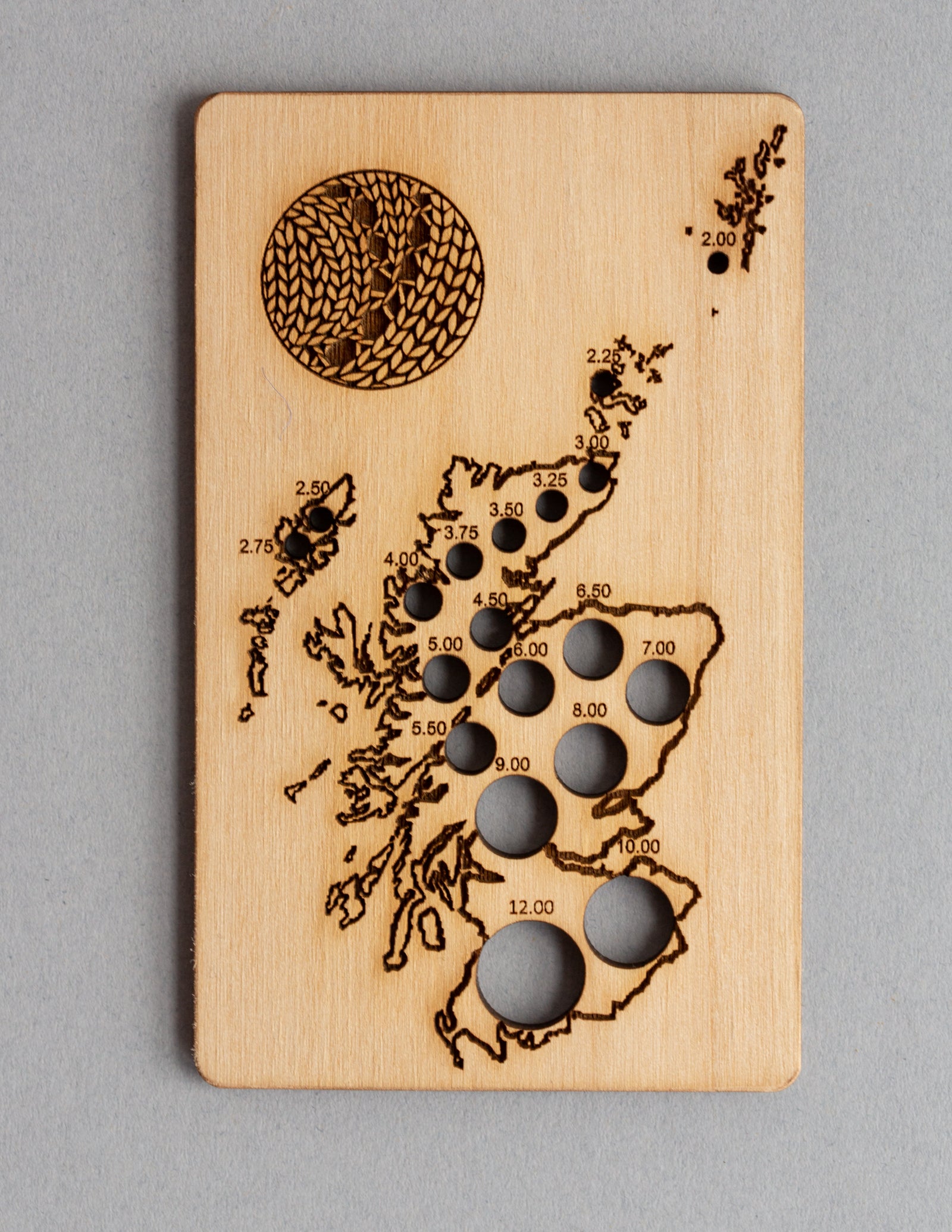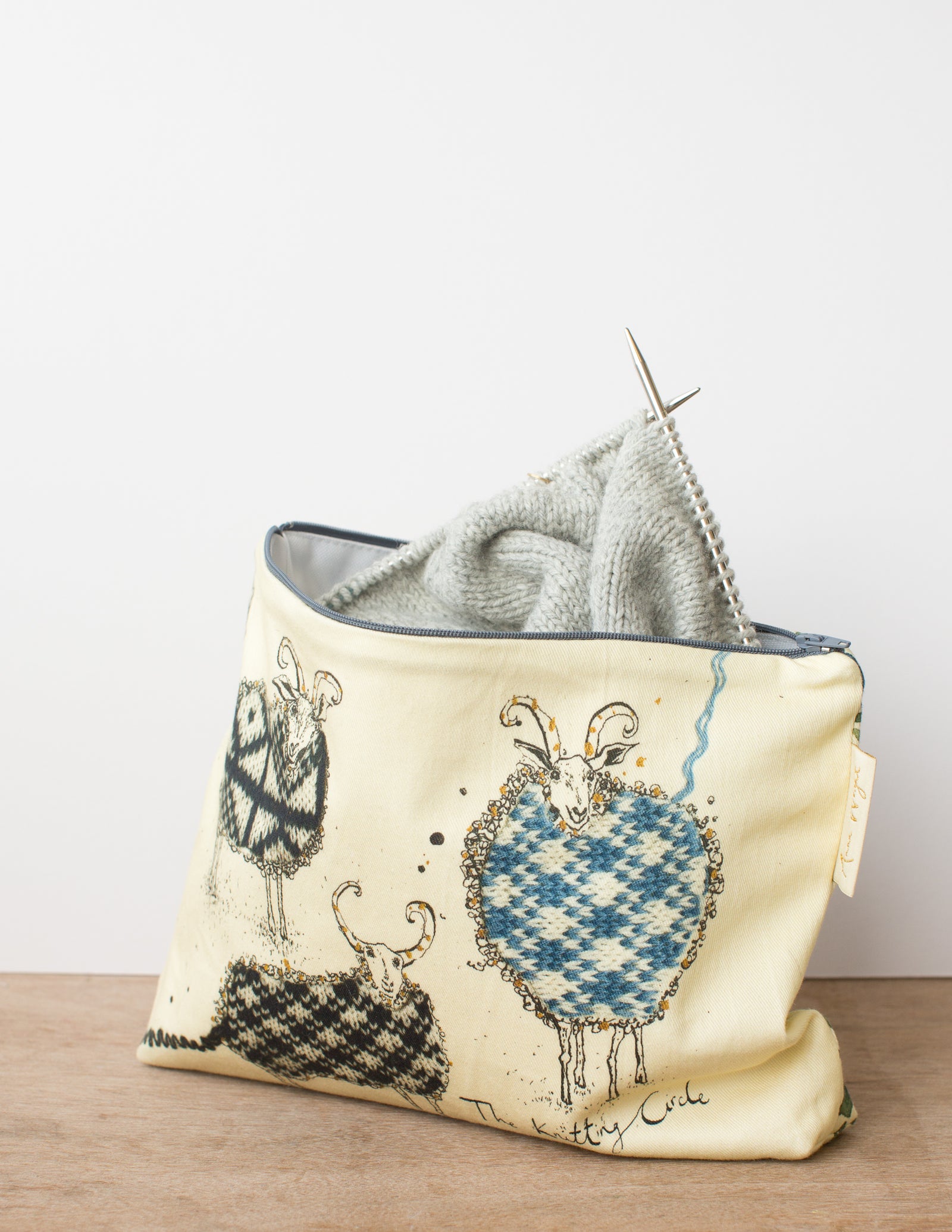
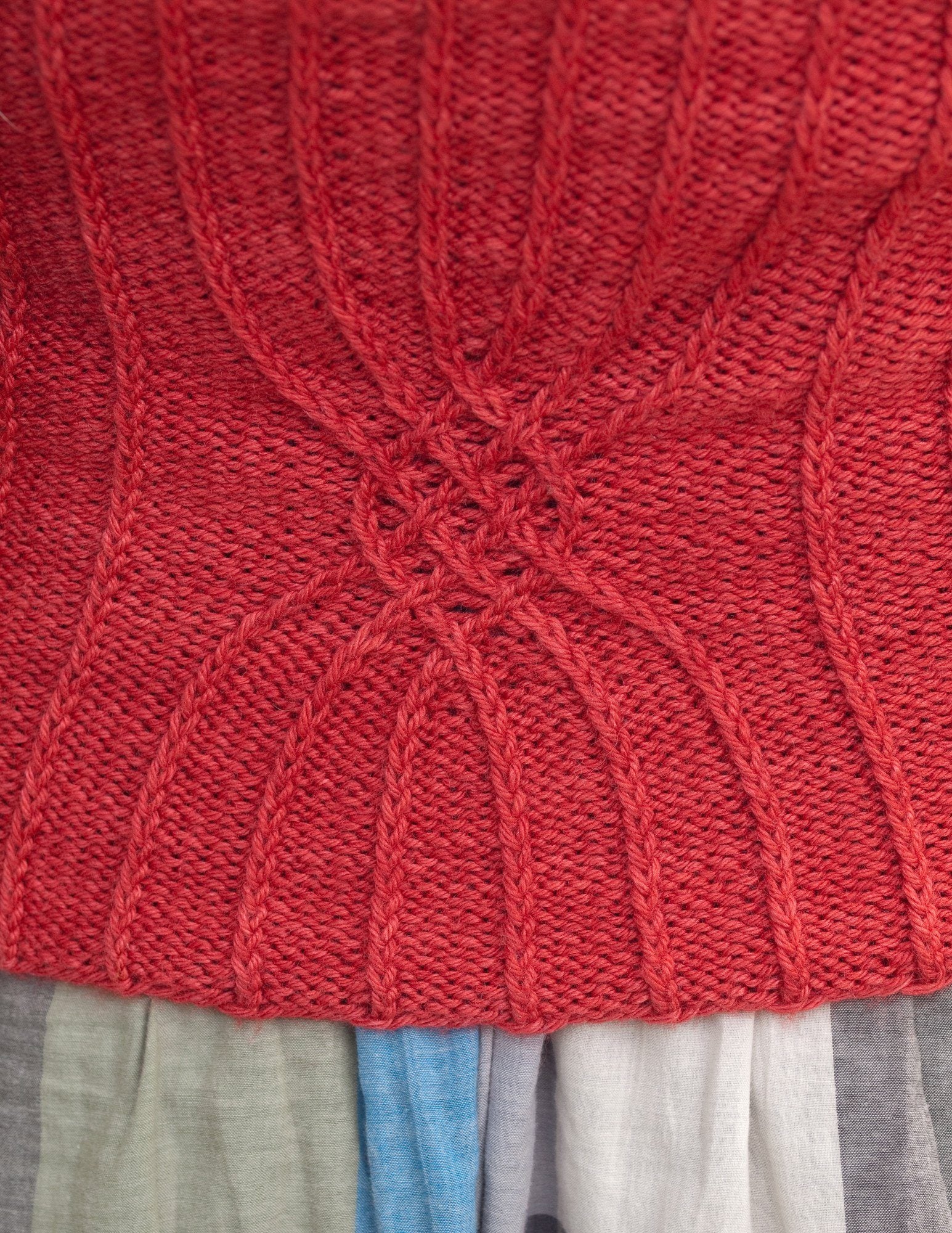
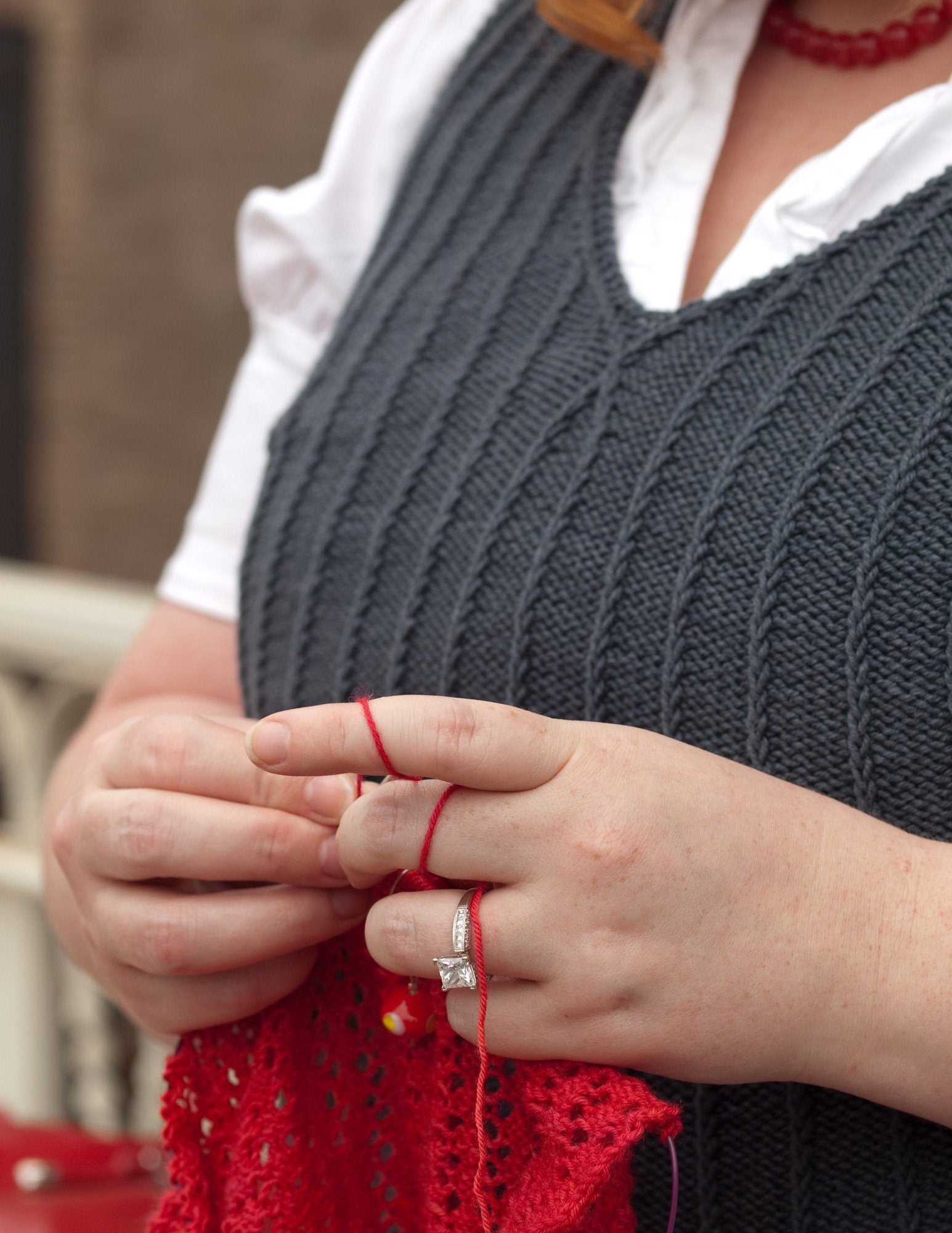
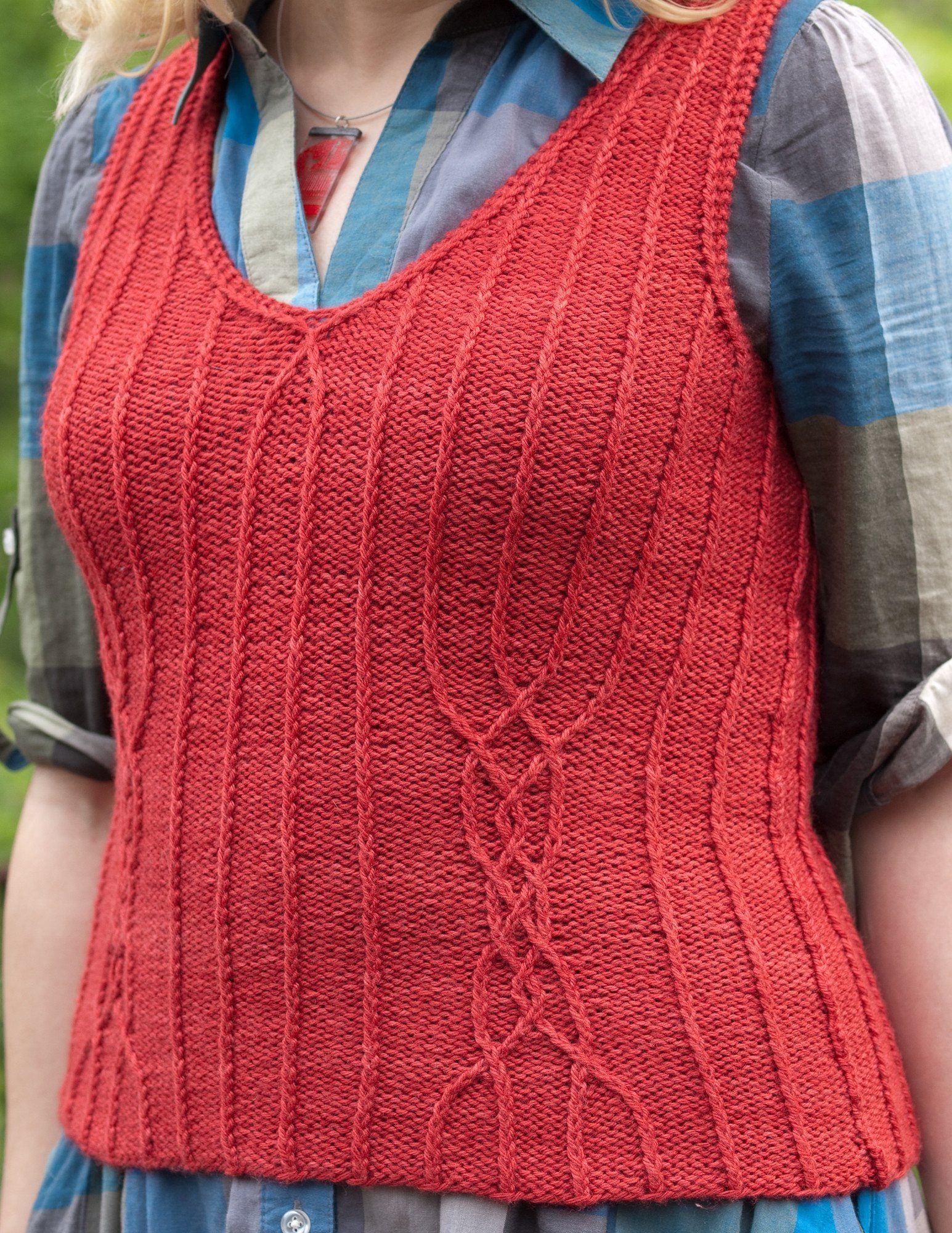
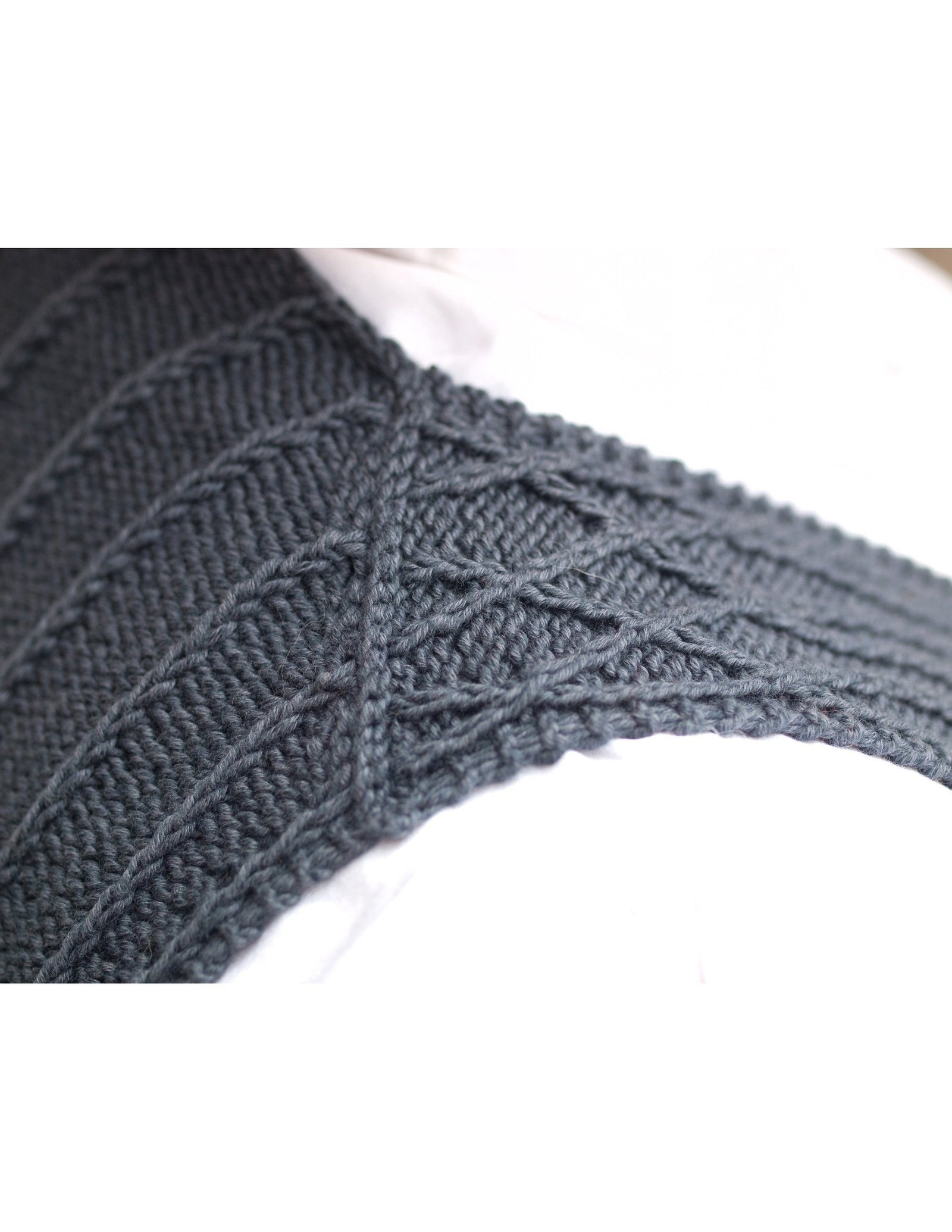
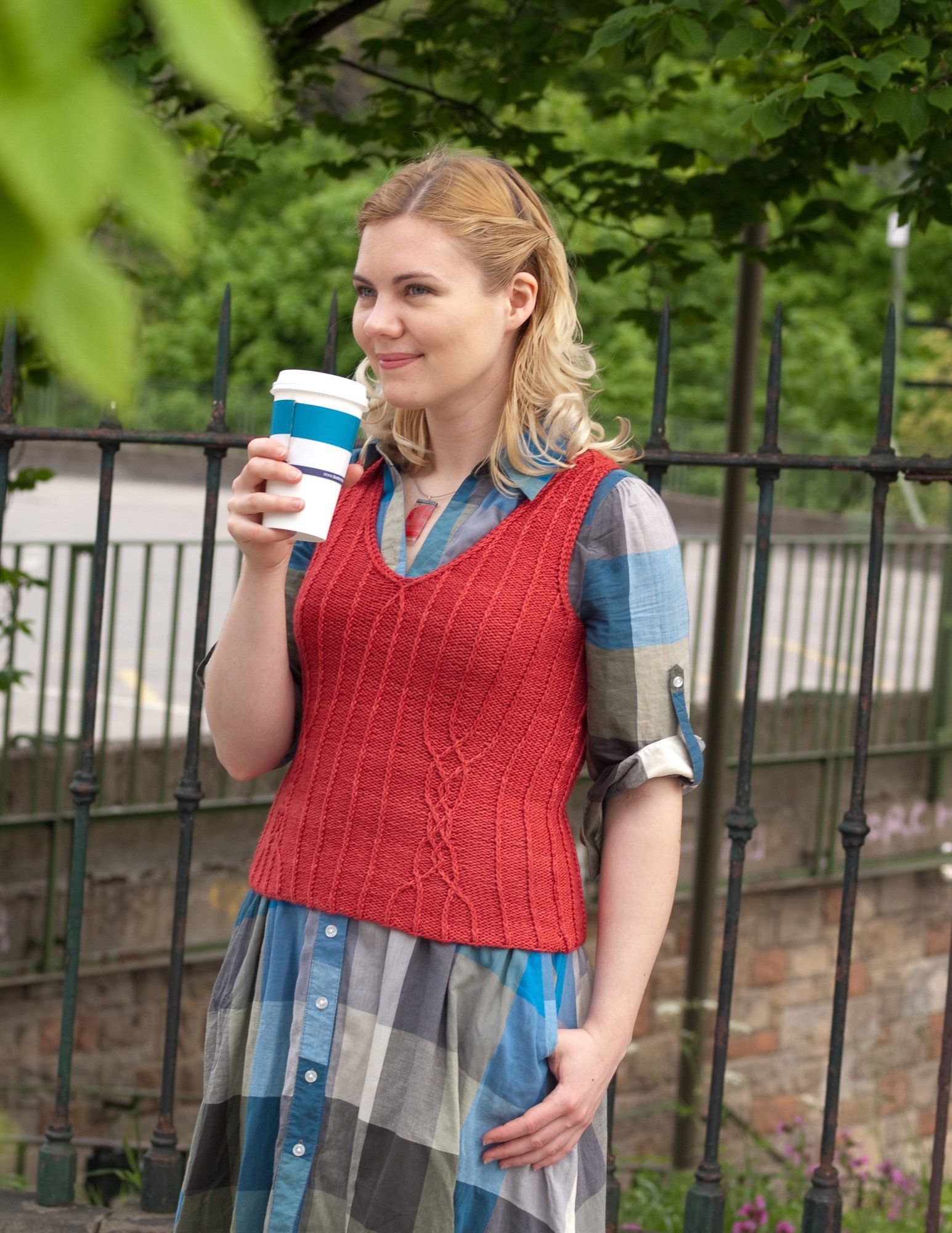
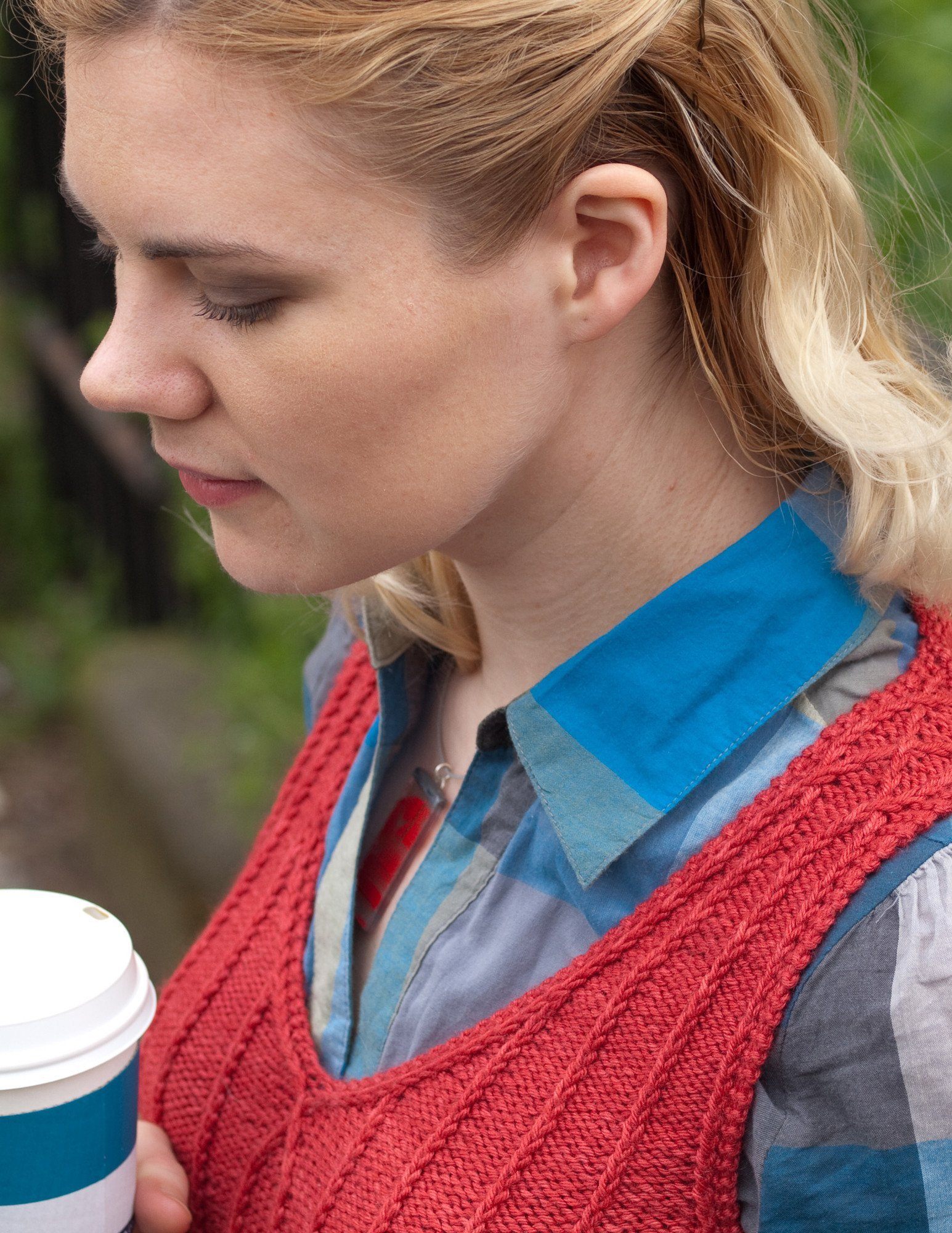

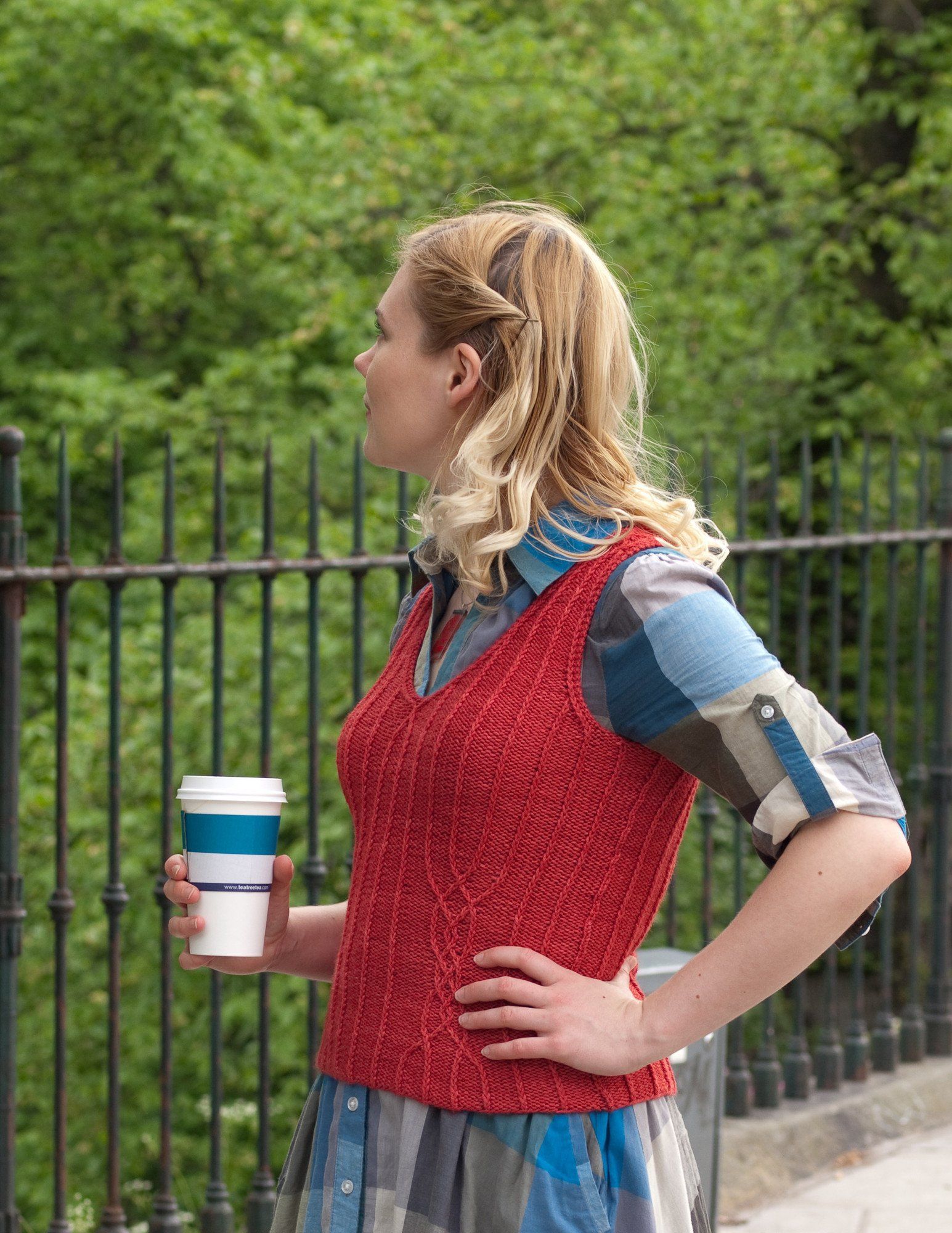
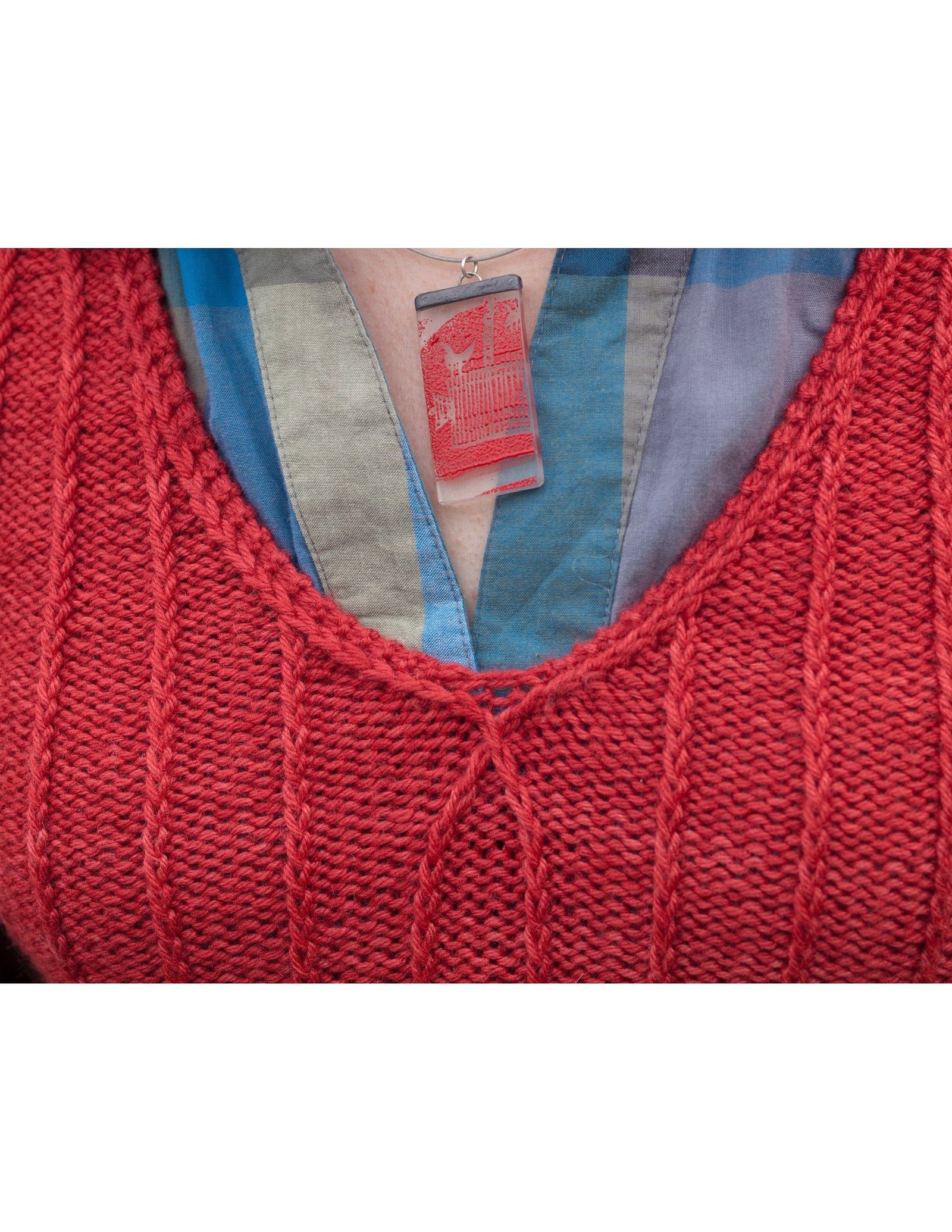
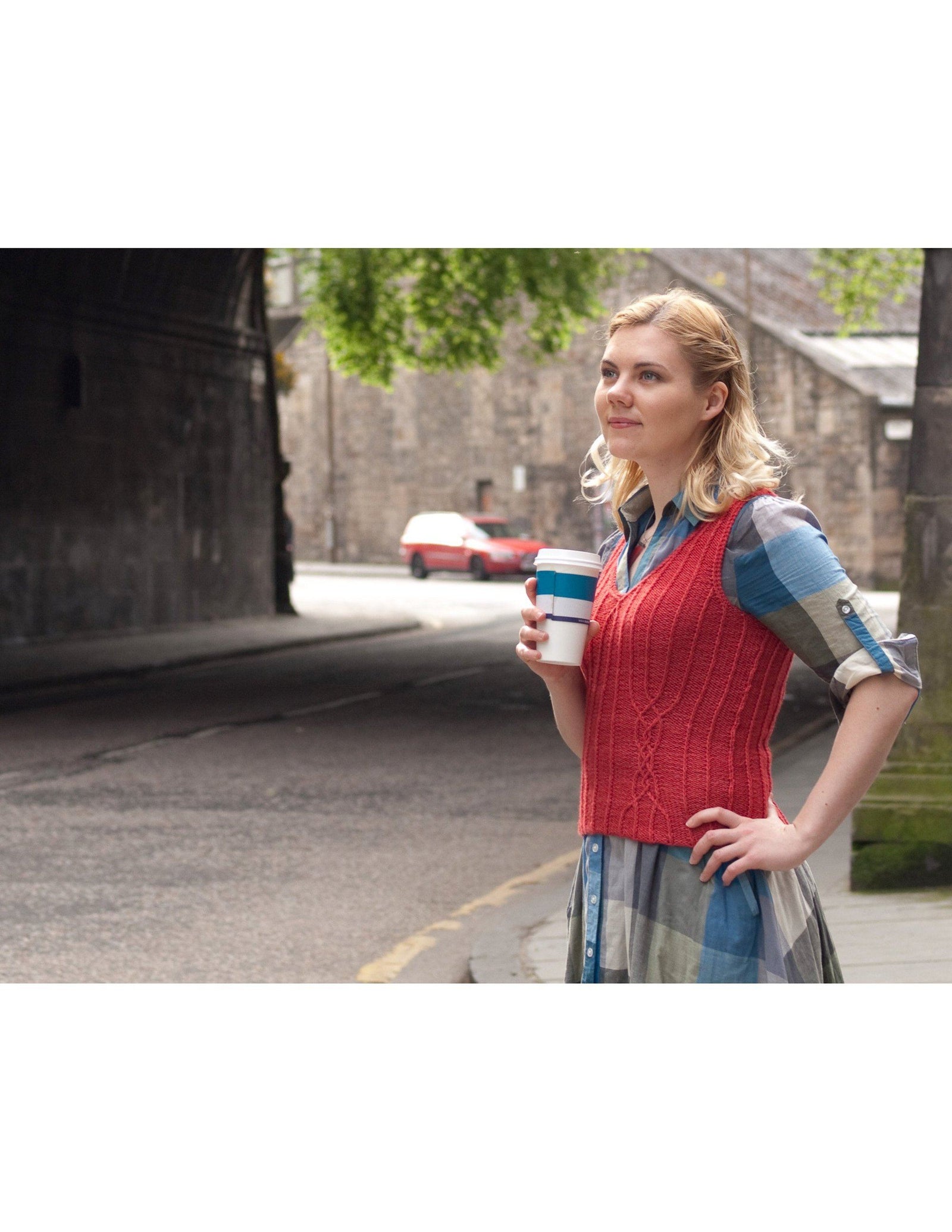
Angostura
- Worsted weight yarn
- Also available on Ravelry
-
CONSTRUCTION
Worked in pieces from the bottom up. Armholes and neck edged with reverse stockinette I-cord. Shaping worked into cable patterns. Twisted stitches are slipped on wrong side to make them more pronounced.
OTHER SUPPLIES
3rd needle in the same size as gauge needle for 3 needle bind off.
Scrap yarn for holding sts. -
The most important thing is to use a smooth yarn with good stitch definition. Some elasticity is needed but yarns with a percentage of inelastic fibres can be used because the twisted ribs, cables and seams help hold the shape. Watch out for yarns that split easily as the twisted cables will be harder to work. Altering the body length will require a change in the yarn required of approximately 5% per inch / 2.5cm.
-


-
Technique Thursday - TSSK and T2TOG
Technique Thursday - Cabling without a cable needle
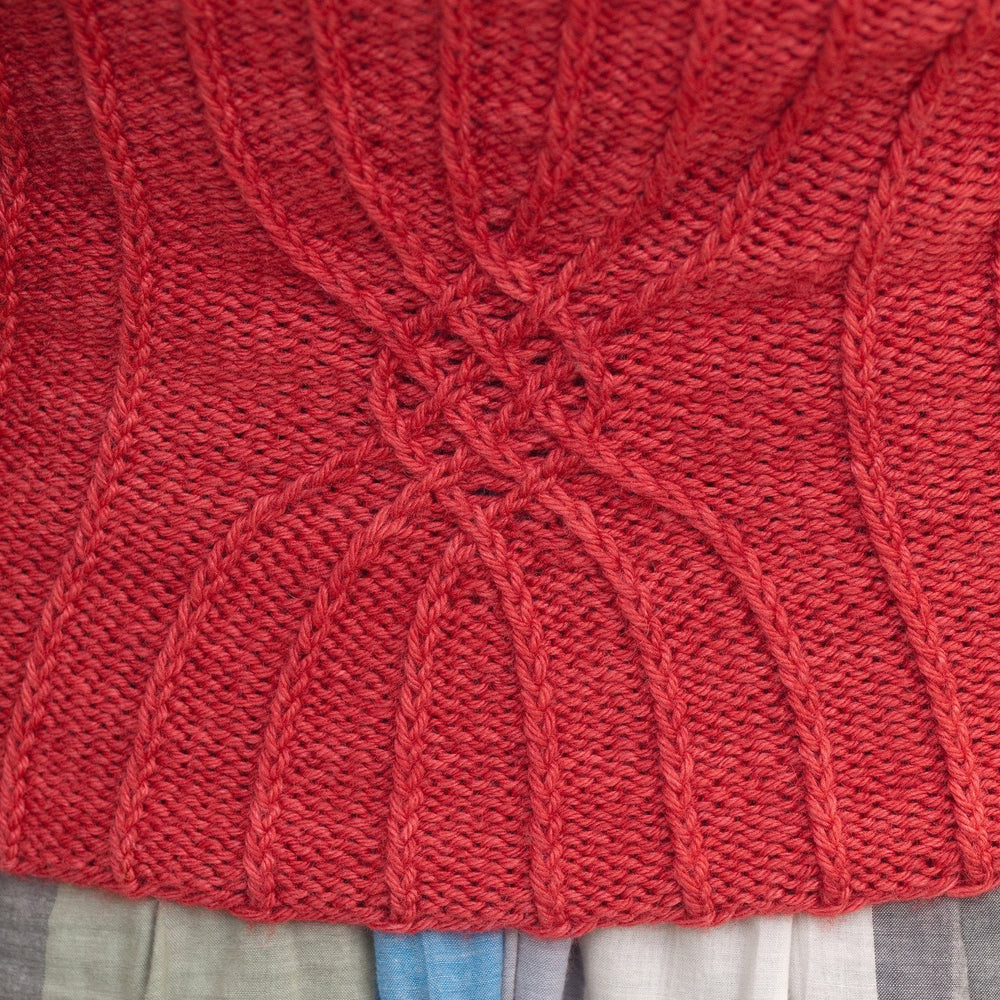


Details
Gauge
20 stitches and 36 rows = 4 inches in 1×4 twisted slipped rib
Sizing
Finished Chest Circumference: 30[32, 34, 36, 38, 40] (42, 44, 46, 48, 50) [52, 54, 56, 58, 60]" /
76[81, 86, 91, 97, 102] (107, 112, 117, 122, 127) [132, 137, 142, 147, 153] cm
Shown in sizes 34 and 48 with zero ease at the bust.
Supplies
Yarn
Worsted weight yarn with a suggested gauge of 5 sts per inch / 2.5cm.
Needles and notions
US 3 / 4.5mm straights or circular 24" / 60 cm or longer
Yardage
Ysolda’s version shown in Brook’s Farm Four Play (50% wool, 50% silk, 270yds / 247m, 4.02oz / 114g) in Bergamot. Amanda’s version shown in Classic Elite Chesapeake (50% organic cotton, 50% wool, 103yds / 94m, 1.76oz / 50g) in Mephisto. 425[485, 495, 560, 595, 615] (665, 690, 730, 775, 810) [855, 890, 920, 975, 1000] meters 465[530, 540, 610, 650, 675] (725, 755, 800, 845, 885) [935, 975, 1005, 1065, 1095] yards
Pdf file versions
Our patterns are thoroughly checked and tested but occasionally errors do slip through. These are updated in the patterns as soon as possible, and we also issue periodic updates to clarify directions, extend size ranges, or add more inclusive pattern formats.
If it's been a while since you purchased this pattern please double check that your file names match the following before casting on:
Updates are issued via email, please contact us if you can't find an update, or if you think you've found an error in the most up to date version of the pattern.




